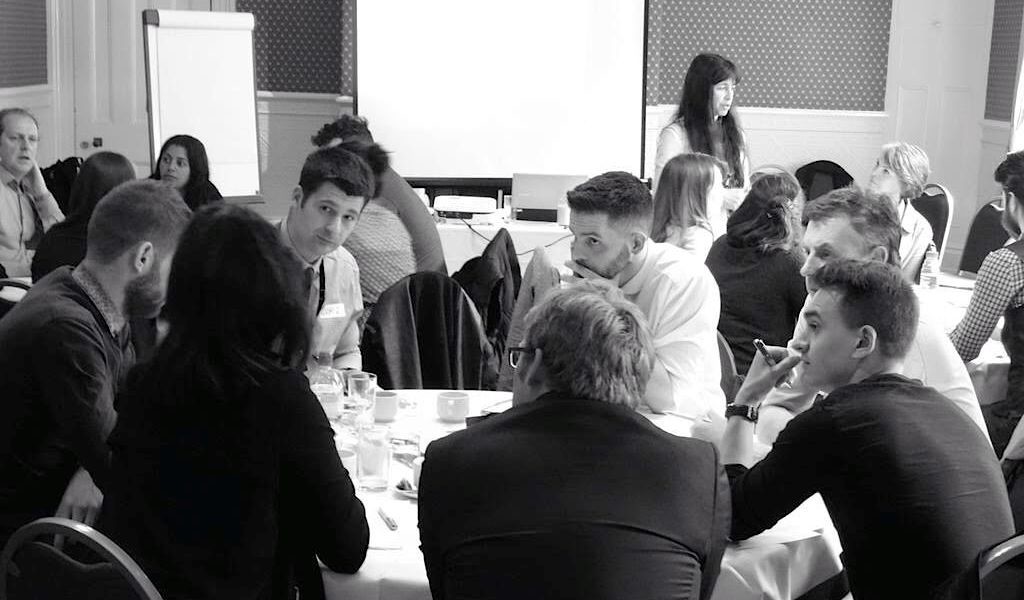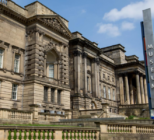Over the past 12 months there have been significant steps forward within the tourist economy in addressing accessibility. Research undertaken to assess the nature and value of accessible tourism have been conducted, highlighting the benefits in making accessibility a priority issue for estate managers in planning the visitor experience.
I’m sadly of the age now when I fail to recall what I had for dinner last evening and such ‘senior moments’ are becoming more regular! The mundane routines of daily life are easily forgotten but childhood memories, with family and friends on a day out or holiday, remain vivid in the memory.
As a young boy I recall the first sight of a truly terrifying German two-handed sword held at Bamburgh Castle, Northumberland. I remember well the strangely tiny suit of armour worn by Henry VIII, the water sprinklers moisturising the timbers of the Mary Rose, the 15 inch naval guns stationed outside the Imperial War Museum and ‘Dippy’ the Diplodocus residing in the central hall of the Natural History Museum – unforgettable.
Of course back in early 1980s most objects could only be peered at by pressing my face to the glass cabinet, viewed from a distance behind a rope and studied by reading a plaque positioned on a pedestal in front of the object in question.
The thought came to me at the time, no doubt, that I could take my children to see such wonders one day? When I was blessed with Annie, born prematurely, it became apparent that this ambition might not be quite so easy to achieve. And so it begins …
Before we set off
Our family ‘visitor journey’ is a little more challenging than what I remember as a child. I’m sure dad pawed through the AA Road Atlas the night before we set off for ten minutes at the most. Planning our family day out with a disabled child takes many hours, much of it completed late at night when children aren’t requiring attention.
Navigating websites for information is part of the planning process with an eye on suitability for Annie. Researching transport connections, parking for our family ‘bus’, suitable toilets for three adults (Annie uses a full size wheelchair) to manoeuvre her, what help we can expect if we need it when we arrive, where to store all our gear? What about somewhere to eat that offers more than cupcakes, brownies and tiffins that maybe a temptation for mum, dad and eldest but offer a significant health risk to Annie who can’t burn the calories so easily due to her being a wheelchair user?
When we book we’d prefer to speak to someone rather than book online – many families like ours feel the same way. Our questions can be answered and ideally the person on the other end of the line has knowledge of the physical access limitations of the attraction and features and services that meet Annie’s needs and aspirations.
Setting off
It didn’t take long for myself and three siblings to jump in the Austin Allegro and idle up the empty A1 heading for Scotland. It was a fact none of us contemplated buckling up and so it seemed a speedy process leaving the drive. Today, when embarking, my family has a routine with everyone having a task to perform in setting off in our adapted van. It takes about ten minutes minimum for us to work together in securing Annie in safely and it’s a physical activity that we all benefit from. Upon arrival we do everything in reverse of course.
Katie Clarke, my colleague at Visits Unlimited, states families who arrive at a venue ‘deserve a medal’. That’s right! So we expect a warm welcome when we arrive and an open question such as ‘How can I help you? Annie likes to have her opinion sought too.
The visitor experience
My lad Fraser is a bright boy, studious and well behaved but I’m not too sure he’d be totally enamoured if he were to be transported to the 1980s museum experience I recall – looking into a cabinet and reading a paragraph.
Young people expect to engage, explore, interact and question. Contrary to media opinion, teacher training and pedagogy practice has progressed in the classroom. Teachers are judged in demonstrating and exploring the way children learn, identifying learning styles and then developing resources to meet the needs of all learning styles.
Children understand their learning styles as a result, raising their expectations as visitors to attractions. Adults too have such expectations. Fail to address learning styles and fail to engage with the visitor. Has Fraser’s Xbox and PS3 posed a threat? Actually developments in technology hardware and software now offer fabulous low cost solutions to engage your audience. The Apple or Kindle could offer an alternative learning solution for visitors who cannot get up the staircase at your Grade II listed building, including Annie using her wheelchair. Annie also loves the opportunity to demonstrate her prowess to others in using and engaging with her ipad.
What constitutes a ‘reasonable adjustment’ shouldn’t be a term that strikes fear into the Finance Officer at the attraction. This term is often mistakenly associated with solely the need to invest significant budget into a capital project to install a lift. Investing in replica artefacts to handle for the kinaesthetic learner (and visually impaired visitors use their hands to see), developing learning resources with inclusion in mind, training employees as a pair of helping hands if required or perhaps as trained guides for visually impaired visitors, hearing loops, appropriate signage: there are so many low cost reasonable adjustment quick fixes. It is estimated that only six per cent of disabled visitors are permanent wheelchair users. You can be accessible though physical access barriers exist.
Physical access limitations are not an excuse for failing to keep accessibility off the management action plan as Emma Manners, Fountains Abbey Learning Officer, remarked during our recent training course: “We understand that accessibility at venues must start with management buy-in. We recognise that all our Project planning needs to include disability access and awareness.
Management training will be crucial in rolling out a programme of change. From event planning to playground development, signage and pre-information, disability access and awareness needs to become a part of all our projects to transform equality and the visitor experience for the long term.”
So what’s the biggest access barrier that families like mine face?
In a word, attitude. When we at Visits Unlimited asked our families on social media this question, the number one answer was ‘poor attitude in understanding and meeting our needs’. Physical access barriers and inadequate toilets were other significant barriers after this.
Annie was the driver for my decision to join Visits Unlimited in offering clients in the heritage sector face-to-face and in-depth training focusing on visitors with additional needs and supporting attractions in strategic planning on accessibility issues to improve the visitor experience and of course, increase footfall.
VisitEngland recently commissioned us to lead the face-to-face training element for their ‘Access For All’ programme in support of their efforts to meet their accessible tourism 5 per cent annual growth forecast in the coming years. Certainly VisitEngland think it’s a necessity to offer attractions accessibility training. The ‘Purple Pound’ research data suggests families like mine – parties with a disabled travelling companion – spend £12.4bn annually, a figure that makes everyone take note.
We went on “tour” to seven Accessible Destinations over the space of six weeks – supported by two other organisations Access Solutions and Accessible Derbyshire – all of us led by people who have lived experience of disability. Katie visited the destination lead areas – The Peak District, Nottingham, Birmingham, Lincoln, Brighton, Kent and finally Northumberland. At each destination Visits Unlimited delivered the training to a variety of businesses ranging from Selfridges to small accessible Bed and Breakfast places; from large hotels to visitor attractions such as Dreamland, Margate and Sea Life Centre, Brighton.
The training was extremely well received by management and staff – our training is fun, enlightening, engaging, and inspirational and is definitely not a dull disability course. We make sure that employees leave feeling good about their work, confident in communicating with disabled people, and passionate about improving the services offered.
Significantly there is a reported £1.8bn per month ‘latent spend’ – potential spending power sat at home and not playing out because of barriers stopping UK visitors experiencing our wonderful heritage. There is much work to do in encouraging disabled visitors to our wonderful heritage attractions. Informed choice, engaging experiences and great service on a heritage visit broadens horizons and creates memories for all of us, Annie is no exception.
For further information on the accessible tourism market and the training services on offer through Visits Unlimited click here.
The Purple Pound
£12.4bn annual spend
£1.8bn per month latent spend
20 per cent of total domestic tourism ‘all day visits’ are made by parties where a member has an impairment
Figures from VisitEngland’s Unlocking the Purple Pound Conference (March 2015)










